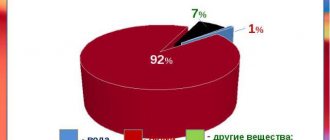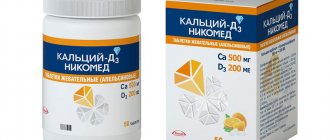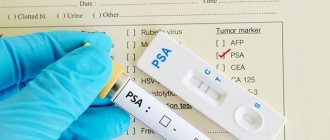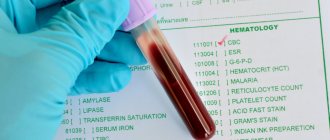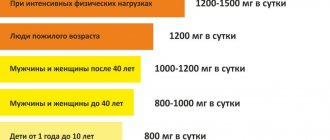Factors causing low performance
Hypocalcemia (Ca deficiency) develops against the background of:
- Vitamin D deficiency in the body.
- The patient's serious condition resulting from a burn.
- Postoperative period.
- Metabolic changes caused by alkalosis.
- Magnesium deficiency.
- Signs of rickets.
- Pancreatic dysfunction.
- Pathologies of the kidneys and liver.
- Disturbances in the process of calcium absorption.
It should be noted that reduced levels of the ionized blood component are especially dangerous for the developing child’s body and the elderly.
Characteristic signs of low calcium
If Ca in the blood is significantly reduced, the following symptoms are observed:
- Osteoporosis develops.
- Teeth are destroyed.
- There is increased brittleness of nails.
- Dry skin, brittleness and dullness of hair are observed.
- Arrhythmia and tachycardia develop.
- Blood clotting decreases.
- There is increased nervousness, mood instability, accompanied by intense headache and dizziness.
Destructive processes occurring against the background of calcium deficiency threaten serious complications that negatively affect the functioning of vital structures of the body.
Symptoms of increase and decrease
The amount of calcium in the blood should be stable, corresponding to normal levels.
Changes in the amount of this macroelement, either in one direction or the other, can have serious consequences for the body.
Hypocalcemia
If calcium levels are moderately reduced, then the clinic is most often absent.
If the decrease in the amount of calcium is pronounced, then neuromuscular excitability increases, leading to:
- to the appearance of cramps and spasms in the muscles of the arms, legs, and back;
- to paresthesia of individual parts of the body;
- to the development of arrhythmias of varying severity.
Progressive hypocalcemia leads to the development of diffuse encephalopathy, which manifests itself:
- depression;
- dementia;
- various psychoses.
In the chronic form of hypocalcemia, patients often note trophic changes in the skin and its appendages:
- dryness, peeling, increased skin vulnerability;
- brittle nails;
- hair loss.
However, if the concentration of calcium cations in the blood is quickly restored, all symptoms gradually disappear. If the amount of calcium in the blood drops sharply, especially its ionized form, a serious condition occurs called tetany or hypocalcemic crisis.
The symptoms of tetany are as follows:
- painful tonic spasms of symmetrical muscle groups;
- labored breathing;
- numbness of the limbs;
- polyuria;
- diarrhea;
- changes in blood pressure;
The main danger of this condition is possible cardiac or respiratory arrest.
Hypercalcemia
With a mild and transient form of hypercalcemia, the clinic may be absent.

For more severe forms, the clinical picture is expressed:
- Central nervous system (lethargy, drowsiness; memory impairment, transient psychoses, possibly coma);
- neurology (muscle weakness, paresthesia, myalgia);
- Gastrointestinal tract (anorexia, constipation, abdominal pain);
- heart and blood vessels (increased blood pressure, tachycardia, blockades and arrhythmias);
- kidneys (increased urine production, retention of nitrogenous metabolites in the body, impairment of all kidney functions).
Reasons for increased concentration
Significant deviations in values towards an increase in the concentration of calcium in the blood fluid indicate the likelihood of serious disorders in the body. This may indicate both the negative impact of excess Ca on the walls of blood vessels and pathologies of the liver, kidneys and heart.
Among the most common causes of elevated levels, called hypercalcemia, are the following pathological conditions:
- metabolic disorders occurring against the background of acidosis;
- Williams syndrome, in which calcium is increased for no reason in children immediately after birth;
- excessive concentration of vitamin D in the body.
- chronic and acute kidney diseases;
- genetic predisposition to hypercalcemia;
- excess production of parathyroid hormone - hyperparathyroidism;
- neoplasms in the thyroid gland;
- pathological processes associated with hematopoietic disorders - leukemia, lymphoma;
- disruption of functional processes in the adrenal cortex;
- oncological pathologies, metastases in bone tissue.
An equally serious cause of excess Ca production is the excessive consumption of various foods containing large amounts of this element.
Hypocalcemia and its causes
Hypocalcemia or calcium deficiency refers to an endocrine-metabolic pathology, the symptoms of which are associated with a deficiency of the substance in the patient’s blood. According to statistics, it is most often observed in patients with pancreatitis, people who have suffered concomitant trauma, as well as patients whose condition is complicated by sepsis. Despite this, calcium deficiency can be caused by various reasons.
To consider them in more detail, you should refer to the classification of hypocalcemia.
It is provoked by disturbances in the metabolism of calcium and phosphorus:
- Parathyroid hormone deficiency due to their damage or complete removal. This deficiency is also caused by hemochromatosis, the development of tumor metastases and a number of autoimmune diseases, and may be a consequence of radiation therapy or genetic pathologies.
- Parathyroid hormone dysfunction.
- Disorder of the functioning or synthesis of hormones that regulate calcium and phosphorus metabolism, due to thyroid cancer, excessive synthesis of calcitonin, lack of vitamin D.
The second type of hypocalcemia is functional, it occurs when:
- alkalosis;
- hyperproteinemia;
- renal failure;
- destructive pancreatitis;
- "hungry bone" syndrome;
- as a pathology acquired from a mother with hyperparathyroidism.
In addition, calcium deficiency can be caused by poisoning and taking certain medications:
- Too much incoming phosphorus.
- Treatment with mithramycin and similar drugs.
- Copious transfusion of citrated blood.
- Hypomagnesemia.
- Taking laxatives, phenobarbital, antacids and a number of other drugs.
The initial symptom of hypocalcemia is muscle cramps. This condition is difficult for the patient and can be life-threatening, since convulsions can involve the heart and respiratory muscles.
As the disease progresses, in addition to seizures and difficulty breathing, the person begins to gradually lose skin sensitivity. The process begins from the lips and gradually spreads to the skin of the extremities.
The nervous system manifests itself as sweating, hepatic colic, diarrhea and vomiting. Nervousness and irritability, mental disorders, vision problems (cataracts), and pregnancy complications may occur. Patients suffer from migraines, frequent dizziness, hair and nails become brittle and may fall out. The skin feels dry to the touch.
Another unpleasant symptom is worsening blood clotting. The function is not completely lost, but the period from the onset of bleeding until it stops can increase significantly.
How to prepare for a calcium blood test
In order for a calcium blood test to give an accurate result, you need to undergo simple preparation for the procedure:
- On the eve of the study, you should not drink alcohol, fried or fatty foods.
- The day before blood sampling, it is advisable to avoid heavy physical and emotional stress.
- Blood is donated on an empty stomach, 8-10 hours after the last meal. It is recommended to drink only still water.
- It is not recommended to donate blood immediately after fluorography, rectal examination, radiography, ultrasound examination or physiotherapeutic procedures.
Treatment
Before starting treatment, it is necessary to establish an accurate diagnosis, for which a blood test is taken from the patient.
Indications for calcium testing are:
- symptoms of low or excess substance;
- cancer;
- gastrointestinal pathologies;
- preoperative period;
- muscle and bone pain, patient weakness;
- convulsions;
- diseases of the cardiovascular system;
- loss of sensation;
- drop in protein concentration in blood samples;
- problems of the excretory organs.
So, ionized calcium is low - what to do?
The main way to cure calcium deficiency is to compensate for the lack of the substance.
For this purpose, intravenous administration of a solution of calcium chloride, as well as lactate and gluconate, can be used in patients with an established diagnosis in a hospital setting. Ascorbic acid and, to compensate for hypomagnesemia, magnesium sulfate can be added to the solution.
At home, with a relatively mild course of the disease and an established diagnosis, powder forms of the mentioned medications can be used for oral use.
In addition to medications, the patient needs to adjust the diet towards foods containing calcium and vitamin D:
- hard cheeses;
- sardines;
- dried apricots;
- dairy products;
- sesame;
- soy;
- almond;
- celery.
How to prepare for an ionized calcium test?
- Blood sampling should be carried out in the morning from eight to eleven o'clock.
- Blood is donated on an empty stomach, after a 14-hour fast. You are allowed to drink still water.
- A few days before the analysis, you need to avoid overeating, eating fatty foods, spicy foods, fried foods, alcohol, etc.
- It is not recommended to smoke in the morning before donating blood.
- Also, on the eve of the analysis, it is necessary to avoid physical and emotional stress.
- Normally, in an adult, the level of free calcium in the blood ranges from 1.16 to 1.32 mmol per liter.
- When interpreting the results, it is necessary to take into account that many medications can affect calcium levels.
Treatment with androgens, calusterone, danazol, dihydrotachysterol, diuretics, ergocalciferol, isotretinoin, lithium, progesterone, parathyroid hormone, tamoxifen, testolactone, vitamin D, vitamin A leads to an increase in the level of ionized calcium in the blood.
Treatment with albusterol, alprostadil, amnoglycosides, asparaginase, calctonin, carbamazepine, carbenoxolone, corticosteroids, glucagon, insulin, tetracycline, oxalates, sulfates, etc. leads to a decrease in calcium levels.
What is the difference between total and ionized calcium?
Total calcium is the total amount of ionized calcium bound to calcium proteins and Ca bound to low molecular weight anions.
The level of ionized calcium shows only the amount of free and physiologically active calcium in the blood.
Physiologically active calcium (ionized calcium) is involved in:
- regulation of the activity of the cardiovascular system (normalization of vascular tone, maintenance of normal blood pressure, normalization of heart rate);
- normalization of muscle tone and regulation of the transmission of nerve impulses in muscle tissue;
- normalization of cell membrane permeability;
- regulation of the secretion of hormones and enzymes;
- regulation of the gastrointestinal tract;
- ensuring the full growth of the skeleton and teeth in children;
- maintaining adequate dental bone density in adults;
- accelerating healing of fractures, etc.
Reasons for the increase
An increased level of calcium in the body is just as undesirable as its deficiency. This condition is medically called hypercalcemia.
- IS KNEE PAIN ONLY DUE TO CALCIUM LACK?
The reasons for its appearance are as follows:
- The presence of leukemia or myeloma,
- Oversaturation with vitamin D,
- Gigantism,
- Chronic form of enteritis,
Sometimes the analysis result is erroneous. If there is a possibility of error, the study is repeated.
An increase in the substance provokes the use of drugs containing the following elements:
- Diuretics,
- Calcium salts,
- Thyroxine,
- Lithium salts,
Symptoms of calcium deficiency
When the body does not have enough calcium for vital functions, it takes it from the skeleton. Alkaline element deficiency is observed in women during pregnancy. Many people lose their teeth during this period - they become more sensitive and begin to crumble.
A lack of calcium in the body is observed during menopause; symptoms in women during this period include osteoporosis and bone fragility.
Hypocalcemia causes the following symptoms and signs:
- Increased nervous excitability, irritability, insomnia
- Cramps in the calf muscles, tingling in the arms and legs;
- Joint pain, sore gums;
- Heavy menstruation in women;
- Hypertension and tachycardia;
- Dental problems;
- Fragility of nails, fragility and weakness of hair;
Signs of calcium deficiency have symptoms similar to other pathologies, for example, cramps and insomnia are observed with magnesium deficiency. And to identify the problem, you should not self-medicate, but rather undergo an examination and consult a doctor.
Symptoms of hypocalcemia in children are expressed by the fact that children who lack calcium eat chalk and even soil. Bans won't help. To compensate for the lack of calcium, it is better to buy your child calcium gluconate or calcium glycerophosphate in tablets.
How and with what to compensate for calcium deficiency?
People suffering from joint pain and brittle bones are concerned with the question: how to increase calcium in the body?
- It is necessary to ensure sufficient intake of Ca and vitamin D from food during menopause and for men over 50 years of age. The daily intake of calcium should be 1200-1500 mg.
- Reduce or stop drinking coffee, smoking, alcohol
- The elements phosphorus, potassium and magnesium are also involved in the absorption of calcium and its metabolism, so their intake must be balanced.
Treatment of hypocalcemia is aimed at eliminating the nutrient deficiency and the resulting consequences of this deficiency.
Last but not least is the question of how to increase calcium in the blood, but without overdoing it and causing the formation of blood clots? Products containing this alkaline earth metal pass from the stomach to the intestines, where, after appropriate chemical reactions, individual macro and microelements enter the blood, which carries them in the required quantities to bone tissue and body cells. And to prevent calcium from turning into hard lime deposits, vitamin D and other nutrients are needed.
Diseases caused by calcium deficiency
Lack of calcium in the body causes such pathologies as:
Hypocalcemia
What is hypocalcemia? This syndrome involves low calcium levels in the blood. It leads to decreased blood clotting and bleeding. Hypocalcemia occurs for the following reasons:
- decrease in the level of Ca+ ions
- renal failure;
- rapid increase in phosphate levels;
- acute pancreatitis;
- Use of certain calcium-lowering medications.
Hypocalcinosis
This pathology is caused by a lack of calcium phosphate salts in the bones. This syndrome can appear in childhood and leads to disability, since soft bones with a low Ca content are susceptible to fragility.
Osteoporosis
This disease is characterized by a violation of the structure of bone tissue, a decrease in bone density, and a predominance of decay over the process of bone formation. The risk of bone fractures increases. Classified as a metabolic disease of the musculoskeletal system. Women of menopausal age are more often susceptible to this pathology.
Treatment of these diseases is aimed at replenishing calcium in the body and increasing the body's sensitivity to calcium.
